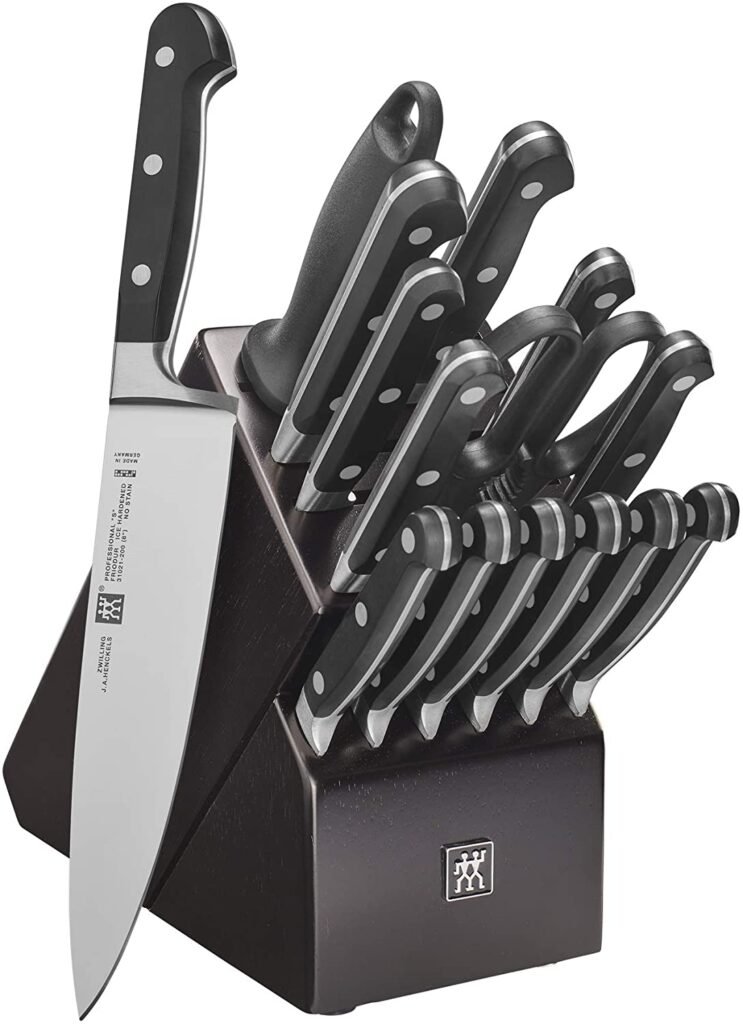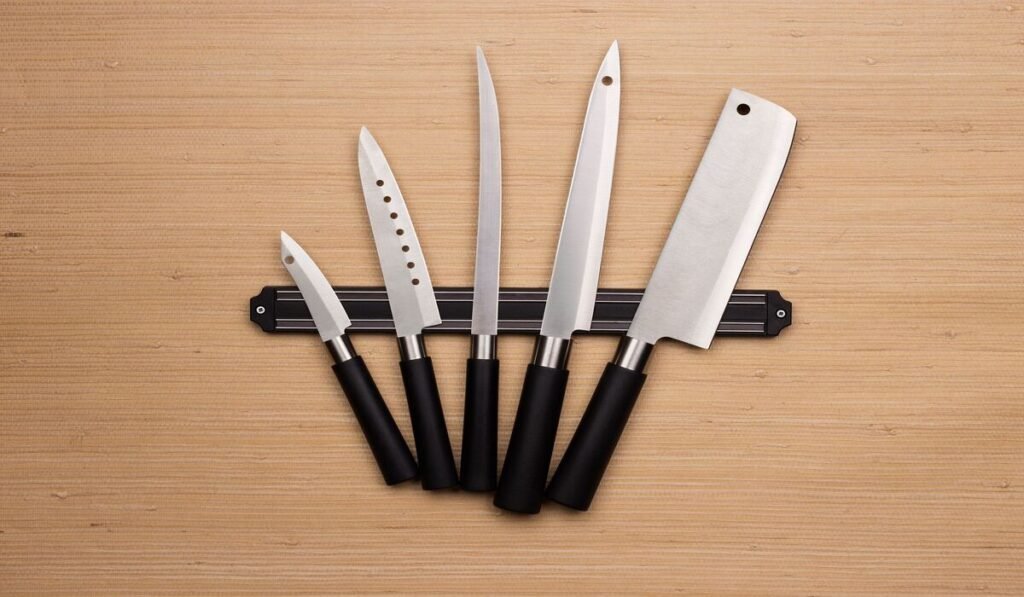There’s lots to consider when buying a knife set but every knife should act and feel like an extension to the user’s hand, so comfort is key. There are four main materials knives are commonly made from: stainless steel, carbon steel, Damascus steel and ceramic.
Type of Knife
A chef’s knife, with its pointy tip and practical 8-10-inch blade length, is perfect for most every cutting need. Use it to chop meat, dice vegetables, and slice fruits. Plus, its broad blade, which spans anywhere from 1-2 inches wide, is also useful for crushing cloves of garlic or scooping ingredients from cutting board to bowl.
A paring knife is designed to fit comfortably in your hand. This makes it easy to manipulate and maneuver, and perfect for small, precise tasks. For example, peeling apples, deveining shrimp, removing pepper seeds. Whenever you feel a chef’s knife is too long, too large, or too much trouble for a task
A serrated knife can do much more than simply slice bread (although that’s definitely important). Typically between 6-10 inches, the serrated blade is perfect for “biting” into trickier surfaces and then sawing, rather than slicing, through the ingredient.
Materials
Look for high-carbon stainless steel for strength and durability. It won’t discolor or rust over time, like ordinary carbon steel can. That said, many professional chefs prefer the relatively softer carbon steel because it’s easier to sharpen. But for the everyday home cook, high-carbon stainless steel is the best choice. Ceramic knife blades have super-hard surfaces, and rarely need sharpening. They’re generally lighter than steel knives, and resist corrosion from acidic ingredients such as lemons or tomatoes. On the downside, ceramic blades are very brittle and can break or chip if dropped. The most common type of knife, they are simple to sharpen and don’t rust easily. However, they’re prone to flexing, bending and going blunt fairly quickly.
Handle
A good handle is one that feels comfortable and secure to you. You shouldn’t have to strain to hold onto it, and it shouldn’t feel slippery when wet. There should be enough clearance on its underside that you don’t bang your knuckles as you chop (the height of the blade affects this). Some knives’ handles have molds or indentations to facilitate grip.
Plastic handles tend to be smooth and free from grooves that can trap dirt. Some plastic knives are also slightly textured, so offer a more secure grip. Some pure wood handles will need oiling with a dedicated knife handle oil. Most modern wooden-handled knives have a light clear plastic coating to protect them.
Sharpening
The only way to truly sharpen kitchen knives is by grinding the edge with a sharpening stone or other manual or electric knife sharpener. To keep the blade in shape between uses, hone it with a sharpening steel.
While knives are usually made of very durable materials, they can be extremely sensitive, especially at the tip and the edge. You need to learn to use, clean, and store them in specific ways to maintain their cleanliness and sharpness.
ORKK TOP SUGGENTIONS :

Japanese Knife Set, imarku 11-Piece Professional Kitchen Knife Set with Block, Stainless Steel

Farberware 22-Piece Never Needs Sharpening Triple Rivet High-Carbon Stainless Steel Knife Block and Kitchen Tool Set, Black

Keemake – Kitchen Knife Set With Block,German Stainless Steel Chef Knife Set,Sharp Cooking Knife Set Professional.

J.A. Henckels International Statement Kitchen Knife Set with Block, 15-pc, Chef Knife, Steak Knife set, Kitchen Knife Sharpener, Light Brown

ZWILLING Professional S Knife Block Set, 16-pc, Black

19-Piece Premium Kitchen Knife Set With Wooden Block | Master Maison German Stainless Steel Cutlery With Knife Sharpener & 8 Steak Knives

